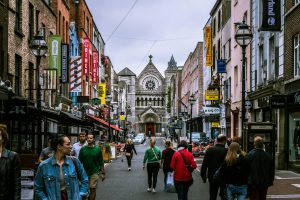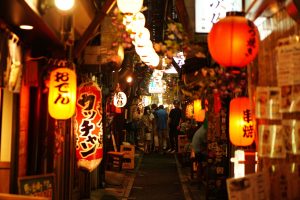Pop-Up Ecosystems: Rotating Stores Curated by Algorithmic Trends
Pop-up shops, also known as temporary retail spaces, have become a popular trend in recent years. These temporary stores are set up for a short period of time, typically a few days to a few weeks, to showcase and sell products or services. From fashion brands to food trucks, pop-up shops seem to be popping up everywhere. But now, there’s a new twist to this trend – pop-up ecosystems curated by algorithmic trends. In this article, we will take a closer look at this emerging trend and how it is changing the retail landscape.
What are Pop-Up Ecosystems?
Pop-up ecosystems are a relatively new concept in the retail world. They consist of a network of temporary stores that rotate and change locations based on algorithmic trends. These trends are determined by a combination of data analysis, consumer behavior, and market predictions. This means that the products and services offered in these pop-up shops are constantly changing and evolving.
The Rise of Algorithmic Trends
In today’s fast-paced and ever-changing market, keeping up with trends is crucial for businesses to stay relevant and competitive. This is where algorithmic trends come into play. Algorithms are used to analyze vast amounts of data, such as social media trends, consumer purchasing behavior, and market trends, to identify popular and emerging trends. This information is then used to curate the products and services offered in the pop-up shops.
The use of algorithmic trends in pop-up ecosystems is beneficial for both retailers and consumers. For retailers, it allows them to stay ahead of the competition by constantly offering trending products and services. And for consumers, they get to experience a new and unique shopping experience every time they visit a pop-up ecosystem.
The Benefits of Pop-Up Ecosystems
Cost-Effective Retail Space
For small businesses and startups, renting a retail space can be a significant expense. Pop-up ecosystems offer a more cost-effective option by providing a temporary retail space at a lower cost. This allows businesses to test different locations and evaluate consumer response without committing to a long-term lease.
Creating Hype and Exclusivity
Pop-up ecosystems are a marketing goldmine. By constantly changing locations and products, they create a sense of urgency and exclusivity, which can generate buzz and attract more customers. This also creates a unique shopping experience for consumers, making them more likely to share their experience with others, both online and offline.
Promoting Sustainability
In a world where sustainability is becoming increasingly important, pop-up ecosystems offer an environmentally friendly option for businesses. By utilizing temporary spaces, there is less energy consumption and waste, making it a more sustainable retail option.
The Future of Pop-Up Ecosystems
As technology continues to advance, we can expect to see more sophisticated algorithmic trends being used in pop-up ecosystems. This will allow for more accurate predictions and targeted curation of products and services. Additionally, with the rise of online shopping, we may see a fusion of pop-up ecosystems and e-commerce, creating a seamless omnichannel shopping experience.
The Impact on Traditional Retail
The rise of pop-up ecosystems curated by algorithmic trends may also have a significant impact on traditional retail. As more consumers are drawn to these unique shopping experiences, traditional retail stores may struggle to compete. The constant rotation of products and locations in pop-up ecosystems may also challenge the traditional concept of brand loyalty.
In Conclusion
Pop-up ecosystems curated by algorithmic trends are an innovative and exciting development in the retail industry. They offer a cost-effective, sustainable, and ever-evolving retail option for businesses and a unique shopping experience for consumers. As this trend continues to grow, it will be interesting to see how it will shape the future of retail.











